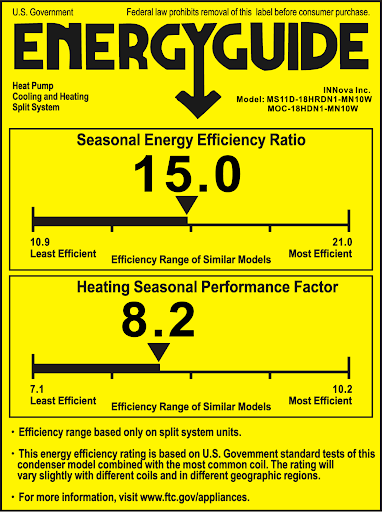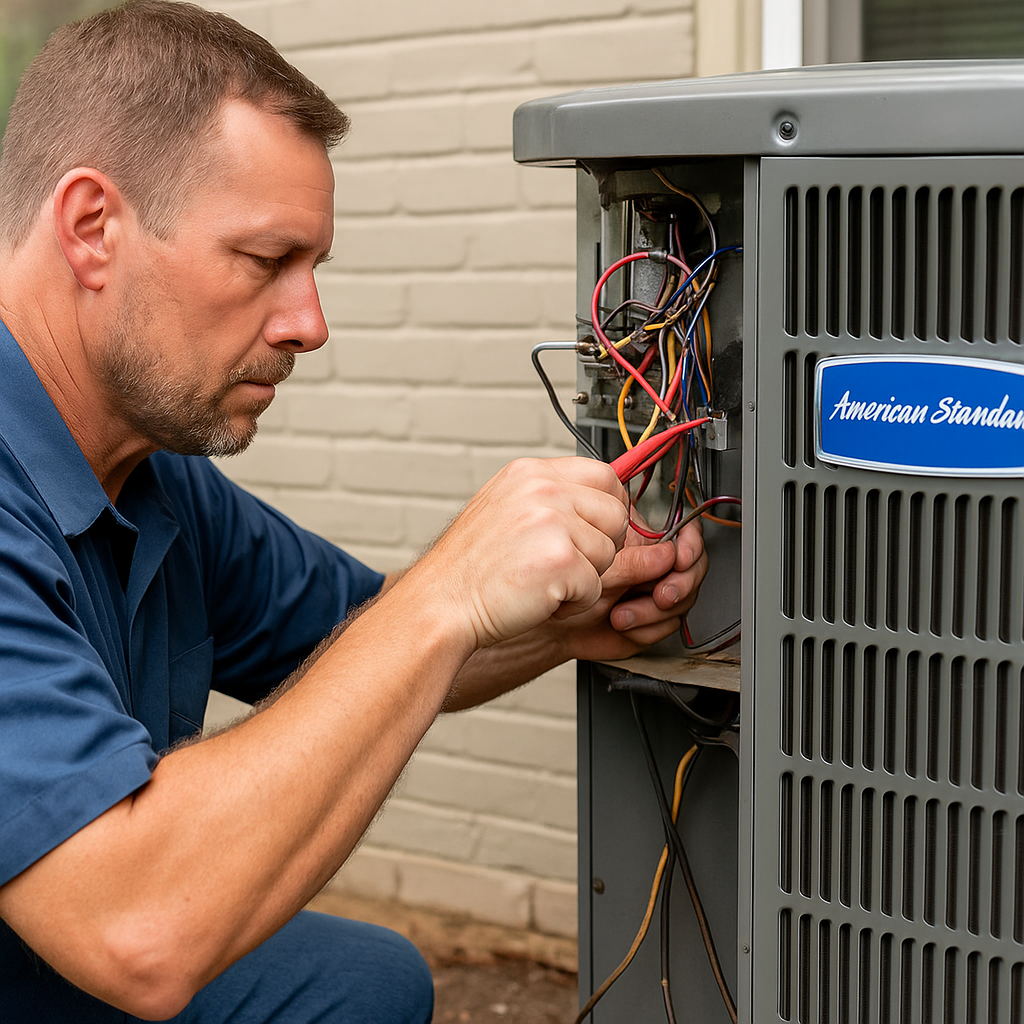Uncategorized
Seer Rating Guide
Understanding SEER Ratings: A Homeowner’s Guide to Cutting Cooling Costs in Central Kentucky
Understanding how to keep your home cool without breaking the bank is a top priority for many homeowners in Central Kentucky. If you’ve ever wondered what SEER rating means or how it can affect your energy bills, you’re not alone. The Seasonal Energy Efficiency Ratio, or SEER, is a crucial factor in determining the energy efficiency of your air conditioning system. With summer temperatures soaring in places like Lexington and Georgetown, choosing the right AC unit with a high SEER rating can make a significant difference in both comfort and cost. In this guide, we’ll demystify SEER ratings and explore how upgrading your AC system can lead to long-term savings and improved comfort, all while keeping your HVAC system in peak condition with local services like Lexington Electrical & HVAC. To learn more about SEER ratings and their impact on energy savings, check out this helpful resource.
What Does SEER Mean?
SEER, or Seasonal Energy Efficiency Ratio, is a crucial metric for understanding the efficiency of your air conditioning system. Let’s break down what SEER means and why it matters for your energy costs.
Understanding SEER Rating Explained
SEER rating is a measure of an air conditioner’s cooling output divided by its energy consumption over a typical cooling season. Trane, a leading HVAC manufacturer, explains that SEER is calculated under specific test conditions to provide a standardized comparison between different AC units.
The higher the SEER rating, the more efficient the air conditioner. For example, a 16 SEER unit is more efficient than a 13 SEER unit. This means it can provide the same amount of cooling while using less energy.
It’s important to note that SEER represents the maximum efficiency a unit can achieve under ideal conditions. Real-world performance may vary based on factors such as climate, home insulation, and system maintenance.
Importance of SEER in Energy Costs
SEER ratings directly impact your energy bills. A higher SEER rating typically translates to lower operating costs, as the system uses less energy to produce the same cooling effect.
Carrier, another respected HVAC company, points out that upgrading from a lower SEER unit to a higher one can result in significant energy savings over time. This is especially true in areas with long, hot summers like Central Kentucky.
However, it’s crucial to balance the potential energy savings with the initial cost of a high-SEER unit. While more efficient systems may cost more upfront, they often pay for themselves through reduced energy bills over their lifespan.
How SEER Ratings Affect Energy Use
Understanding the relationship between SEER ratings and energy consumption is key to making informed decisions about your home cooling system. Let’s compare different SEER ratings and explore their impact on energy bills and comfort.
Comparing SEER: 13 vs. 18
To illustrate the difference between SEER ratings, let’s compare a 13 SEER unit to an 18 SEER unit. Kobie Complete, an HVAC service provider, offers a helpful SEER savings calculator that can demonstrate these differences.
A 13 SEER unit is considered the minimum standard for new air conditioners in many regions. An 18 SEER unit, on the other hand, is significantly more efficient.
For a typical 3-ton AC unit running 1,000 hours per cooling season:
-
A 13 SEER unit might consume about 2,769 kWh
-
An 18 SEER unit might consume about 2,000 kWh
This difference of 769 kWh can translate to substantial savings on your energy bill over time.
Impact on Energy Bills and Comfort
The impact of SEER ratings on energy bills can be significant. Using the example above, if electricity costs $0.12 per kWh, the annual savings from using an 18 SEER unit instead of a 13 SEER unit would be about $92.
Over the typical 15-20 year lifespan of an AC unit, these savings can add up to $1,380 – $1,840. This can offset a significant portion of the higher initial cost of a more efficient unit.
Beyond energy savings, higher SEER units often provide better comfort. They typically have features like variable-speed compressors, which can maintain more consistent temperatures and humidity levels in your home.
When Should I Upgrade My AC for a Better SEER?
Knowing when to upgrade your AC system is crucial for maintaining comfort and energy efficiency in your home. Let’s explore the signs that indicate it’s time for an upgrade and the benefits of choosing a high SEER unit.
Signs It’s Time for HVAC Upgrades Kentucky
There are several indicators that your AC might be due for an upgrade:
-
Age: If your system is over 10-15 years old, it’s likely less efficient than modern units.
-
Rising energy bills: If you notice a steady increase in your cooling costs, your AC may be losing efficiency.
-
Frequent repairs: If you’re calling for repairs more often, it might be more cost-effective to replace the unit.
-
Inconsistent cooling: If some rooms are too warm while others are too cold, your system may be struggling to distribute air effectively.
-
Unusual noises or odors: These can be signs of serious issues that might warrant replacement rather than repair.
Benefits of a High SEER AC Unit
Upgrading to a high SEER AC unit offers numerous benefits. Service Experts, a nationwide HVAC service provider, highlights several advantages:
-
Lower energy bills: High SEER units use less energy to cool your home, resulting in significant savings over time.
-
Improved comfort: Advanced features like variable-speed compressors provide more consistent temperatures and better humidity control.
-
Environmentally friendly: More efficient units consume less energy, reducing your carbon footprint.
-
Quieter operation: Modern high SEER units often run more quietly than older, less efficient models.
-
Potential tax credits: Some high-efficiency units may qualify for local or federal tax incentives, further offsetting the initial cost.
Cozy Club Tip: Protect Your Investment
Once you’ve invested in an energy-efficient AC system, it’s crucial to maintain it properly to ensure it continues operating at peak efficiency. Here are some tips to help you protect your investment and get the most out of your high SEER unit.
Maintenance Tips for Energy-Efficient AC
Regular maintenance is key to keeping your AC system running efficiently:
-
Change or clean air filters monthly during peak usage seasons.
-
Keep the outdoor unit clear of debris and vegetation.
-
Clean the evaporator and condenser coils annually.
-
Check and clean the condensate drain line to prevent clogs.
-
Schedule professional maintenance at least once a year, preferably before the cooling season starts.
By following these steps, you can help ensure your AC system maintains its high efficiency rating and continues to provide optimal cooling for your home.
Contact Lexington Electrical & HVAC
For professional maintenance, repairs, or advice on upgrading your AC system, don’t hesitate to reach out to Lexington Electrical & HVAC. Our team of experienced technicians can help you:
-
Assess your current system’s efficiency
-
Recommend appropriate upgrades
-
Provide expert installation services
-
Offer ongoing maintenance to protect your investment
Contact us today to schedule a consultation and take the first step towards a more comfortable, energy-efficient home.


